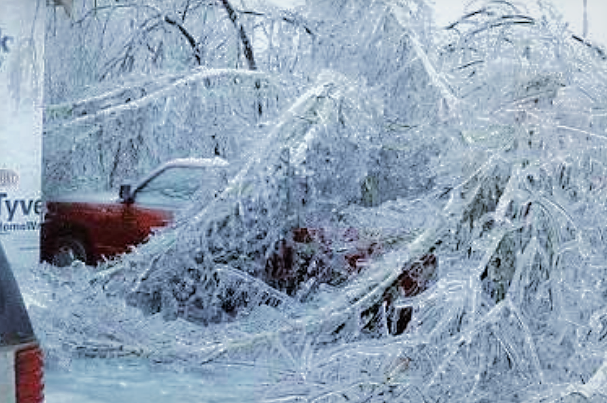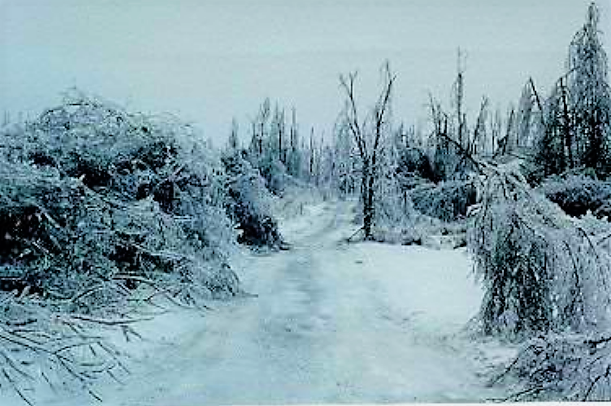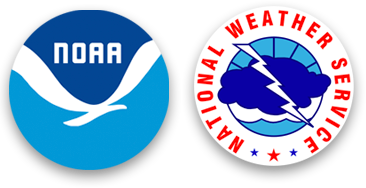The Great Ice Storm of 1998 - National Weather Service Heritage

The Great Ice Storm of 1998
By Emily Senesac (emily.senesac)Amidst the beginnings of a hopeful new year, something other than New Year’s resolutions was being set into motion. From January 5-9, 1998, a meteorological disaster known as the Great Ice Storm of 1998 devastated northern New England, northern New York, and southern Canada. In addition to extreme precipitation amounts and widespread flooding, the deadliest element of this storm was the ice accumulation, reaching three inches in certain areas across the region.
Among other things, the sheer duration of this event made the Great Ice Storm of 1998 historic. While the meteorological event itself occurred over a period of four days, the recovery process lasted even longer, and the long-term impact on the region as a whole lingered for months afterwards.
Despite being observed as a primarily Pacific-Ocean phenomenon, a strong “El-Nino” pattern influenced many storms of the 1997-8 winter season, this one included. Following below-freezing temperatures and arctic pressure systems in the area, steady and heavy precipitation -- in the form of freezing rain -- descended on the region. Thousands of trees and power lines fell due to the weight of the ice that formed, falling on cars, houses, and roads. The property damage as a result of the storm was estimated to be over $3 billion dollars, millions of people lost electricity, and nearly 40 fatalities were reported.

In addition to the obvious primary consequences of this destructive storm, many “secondary” consequences occurred. The widespread devastation of maple and apple trees, for example, greatly affected the maple sugaring and apple industries across the region. Additionally, the reported power outages in some areas lasted several weeks; as a result, many businesses were forced to close. Even more unfortunately, in rather “unsafe” attempts to restore heat and electricity to homes, the use of gas stoves and portable generators led to many cases of carbon monoxide poisoning, and several subsequent deaths.
Winter storms occur every year across the country, resulting in unavoidable storm damage to trees, power lines, homes, and infrastructure. To be as prepared as possible, always monitor forecasts and review safety procedures for winter weather and other environmental hazards.
Additional Reading:
